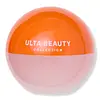What's inside
What's inside
 Key Ingredients
Key Ingredients

 Benefits
Benefits

 Concerns
Concerns

 Ingredients Side-by-side
Ingredients Side-by-side

Diisostearyl Malate
EmollientHydrogenated Polyisobutene
EmollientPhytosteryl/Isostearyl/Cetyl/Stearyl/Behenyl Dimer Dilinoleate
Skin ConditioningHydrogenated Poly(C6-14 Olefin)
EmollientPolybutene
Microcrystalline Wax
Emulsion StabilisingButyrospermum Parkii Butter
Skin ConditioningSynthetic Wax
AbrasiveEuphorbia Cerifera Cera
AstringentSucrose Tetrastearate Triacetate
EmollientHydrogenated Butylene/Ethylene/Styrene Copolymer
EmollientEthylene/Propylene/Styrene Copolymer
Mica
Cosmetic ColorantAroma
Astrocaryum Murumuru Seed Butter
EmollientDimethicone
EmollientCI 77891
Cosmetic ColorantPolyglyceryl-2 Diisostearate
EmulsifyingDehydroacetic Acid
PreservativeMethicone
EmollientCopernicia Cerifera Wax
Silica
AbrasivePolyglyceryl-2 Triisostearate
EmulsifyingCI 47005
Cosmetic ColorantWater
Skin ConditioningPolyhydroxystearic Acid
EmulsifyingCI 42090
Cosmetic ColorantPotassium Alginate
Emulsion StabilisingPropanediol
SolventGlycerin
HumectantAlcohol
AntimicrobialLycium Barbarum Fruit Extract
AstringentVaccinium Macrocarpon Fruit Extract
AstringentFragaria Ananassa Fruit Extract
Skin ConditioningRubus Idaeus Extract
Skin ProtectingSapindus Mukorossi Fruit Extract
Skin ConditioningVaccinium Angustifolium Fruit Extract
Skin ProtectingRubus Chamaemorus Seed Extract
Skin ConditioningCoffea Arabica Seed Extract
MaskingChenopodium Quinoa Seed Extract
Skin ConditioningMagnesium Sulfate
Calcium Chloride
AstringentSodium Hyaluronate
HumectantBeta-Glucan
Skin ConditioningManganese Sulfate
Skin ConditioningZinc Sulfate
AntimicrobialAscorbyl Glucoside
AntioxidantDiisostearyl Malate, Hydrogenated Polyisobutene, Phytosteryl/Isostearyl/Cetyl/Stearyl/Behenyl Dimer Dilinoleate, Hydrogenated Poly(C6-14 Olefin), Polybutene, Microcrystalline Wax, Butyrospermum Parkii Butter, Synthetic Wax, Euphorbia Cerifera Cera, Sucrose Tetrastearate Triacetate, Hydrogenated Butylene/Ethylene/Styrene Copolymer, Ethylene/Propylene/Styrene Copolymer, Mica, Aroma, Astrocaryum Murumuru Seed Butter, Dimethicone, CI 77891, Polyglyceryl-2 Diisostearate, Dehydroacetic Acid, Methicone, Copernicia Cerifera Wax, Silica, Polyglyceryl-2 Triisostearate, CI 47005, Water, Polyhydroxystearic Acid, CI 42090, Potassium Alginate, Propanediol, Glycerin, Alcohol, Lycium Barbarum Fruit Extract, Vaccinium Macrocarpon Fruit Extract, Fragaria Ananassa Fruit Extract, Rubus Idaeus Extract, Sapindus Mukorossi Fruit Extract, Vaccinium Angustifolium Fruit Extract, Rubus Chamaemorus Seed Extract, Coffea Arabica Seed Extract, Chenopodium Quinoa Seed Extract, Magnesium Sulfate, Calcium Chloride, Sodium Hyaluronate, Beta-Glucan, Manganese Sulfate, Zinc Sulfate, Ascorbyl Glucoside
Hydrogenated Polyisobutene
EmollientDiisostearyl Malate
EmollientSqualane
EmollientSynthetic Beeswax
Emulsion StabilisingTribehenin
EmollientSilica
AbrasiveOryza Sativa Bran Wax
Skin ConditioningEthylene/Propylene/Styrene Copolymer
Capryloyl Glycerin/Sebacic Acid Copolymer
Skin ConditioningEthylhexyl Palmitate
EmollientCocos Nucifera Oil
MaskingEthylhexylglycerin
Skin ConditioningSorbitan Isostearate
EmulsifyingButylene/Ethylene/Styrene Copolymer
Butyrospermum Parkii Butter
Skin ConditioningPentaerythrityl Tetra-Di-T-Butyl Hydroxyhydrocinnamate
AntioxidantTrihydroxystearin
Skin ConditioningPalmitoyl Tripeptide-1
Skin ConditioningSodium Hyaluronate
HumectantGlucomannan
Skin ConditioningPhenoxyethanol
PreservativeAroma
Hydrogenated Polyisobutene, Diisostearyl Malate, Squalane, Synthetic Beeswax, Tribehenin, Silica, Oryza Sativa Bran Wax, Ethylene/Propylene/Styrene Copolymer, Capryloyl Glycerin/Sebacic Acid Copolymer, Ethylhexyl Palmitate, Cocos Nucifera Oil, Ethylhexylglycerin, Sorbitan Isostearate, Butylene/Ethylene/Styrene Copolymer, Butyrospermum Parkii Butter, Pentaerythrityl Tetra-Di-T-Butyl Hydroxyhydrocinnamate, Trihydroxystearin, Palmitoyl Tripeptide-1, Sodium Hyaluronate, Glucomannan, Phenoxyethanol, Aroma
 Reviews
Reviews

Ingredients Explained
These ingredients are found in both products.
Ingredients higher up in an ingredient list are typically present in a larger amount.
Aroma refers to an ingredient, or mixture of ingredients, that impart or mask a flavor.
The name is slightly confusing. This is because INCI associates aroma with flavor instead of smell.
Here is the official definition from the The International Cosmetic Ingredient Dictionary and Handbook:
“Aroma is a term for ingredient labeling used to identify that a product contains a material or combination of materials normally added to a cosmetic to produce or to mask a particular flavor.”
INCI shows the only purpose of aroma to be "flavouring".
However, due to regulation differences, some companies may use aroma in place of parfum.
In Canada, this ingredient only has to be listed in concentrations above 1%.
Learn more about AromaThis ingredient is also known as shea butter. It is an effective skin hydrator and emollient.
Emollients help soothe and soften your skin. It does this by creating a protective film on your skin. This barrier helps trap moisture and keeps your skin hydrated. Emollients may be effective at treating dry or itchy skin.
Shea butter is rich in antioxidants. Antioxidants help fight free-radicals, or molecules that may harm the body. It is also full of fatty acids including stearic acid and linoleic acid. These acids help replenish the skin and keep skin moisturized.
While Shea Butter has an SPF rating of about 3-4, it is not a sunscreen replacement.
Shea butter may not be fungal acne safe. We recommend speaking with a professional if you have any concerns.
Learn more about Butyrospermum Parkii ButterDiisostearyl Malate is an emollient and most often used in lip products. It comes from isostearyl alcohol, a fatty acid, and malic acid, an AHA.
As an emollient, Diisostearyl Malate helps create a thin film on your skin to trap moisture in. This helps keep your skin soft and smooth.
We don't have a description for Ethylene/Propylene/Styrene Copolymer yet.
Hydrogenated Polyisobutene is a synthetic polymer. Polymers are compounds with high molecular weight. Hydrogenated Polyisobutene is an emollient and texture enhancer.
In one study, Hydrogenated Polyisobutene showed better skin hydration levels than Caprylic/Capric Triglyceride. As an emollient, it helps keep your skin soft and hydrated by trapping moisture in.
Hydrogenated Polyisobutene is often used as a mineral oil replacement.
Learn more about Hydrogenated PolyisobuteneSilica, also known as silicon dioxide, is a naturally occurring mineral. It is used as a fine, spherical, and porous powder in cosmetics.
Though it has exfoliant properties, the function of silica varies depending on the product.
The unique structure of silica enhances the spreadability and adds smoothness, making it a great texture enhancer.
It is also used as an active carrier, emulsifier, and mattifier due to its ability to absorb excess oil.
In some products, tiny microneedles called spicules are made from silica or hydrolyzed sponge. When you rub them in, they lightly polish away dead skin layers and enhance the penetration of active ingredients.
Learn more about SilicaSodium Hyaluronate is hyaluronic acid's salt form. It is commonly derived from the sodium salt of hyaluronic acid.
Like hyaluronic acid, it is great at holding water and acts as a humectant. This makes it a great skin hydrating ingredient.
Sodium Hyaluronate is naturally occurring in our bodies and is mostly found in eye fluid and joints.
These are some other common types of Hyaluronic Acid:
Learn more about Sodium Hyaluronate